I have two Entity classes User and UserProfile. The User table has a primary key for the User ID which is a long data type. This User ID is supposed to be the primary key in user_profile as well. User also has email as a column, which I want to be linked to the user_profile also. The issue I am having is that for some reason, a column named id is being inserted into my table when I already have the primary key user_id set in the user_profile table. Does anyone know what I am doing wrong?
User:
import javax.persistence.*;
import javax.validation.constraints.Email;
import javax.validation.constraints.NotBlank;
import javax.validation.constraints.Size;
import java.io.Serializable;
import java.util.HashSet;
import java.util.Set;
import java.util.UUID;
@Entity
@Table( name = "users",
uniqueConstraints = {
@UniqueConstraint(columnNames = "username"),
})
@SecondaryTable(name = "user_profile")
public class User {
@Id
@GeneratedValue(strategy = GenerationType.IDENTITY)
private Long id;
@Column(name = "username")
@NotBlank
@Size(max = 20)
private String username;
@Column(name = "email", table = "user_profile")
@NotBlank
@Size(max = 50)
@Email
private String email;
@NotBlank
@Size(max = 120)
private String password;
@ManyToMany(fetch = FetchType.LAZY)
@JoinTable( name = "user_roles",
joinColumns = @JoinColumn(name = "user_id"),
inverseJoinColumns = @JoinColumn(name = "role_id"))
private Set<Role> roles = new HashSet<>();
//getter methods
//setter methods
}User_Profile:
import javax.persistence.*;
import java.util.Objects;
import java.util.Optional;
import java.util.UUID;
@Entity
@Table(name = "user_profile")
public class UserProfile {
@Id
private Long id;
@OneToOne(fetch = FetchType.LAZY)
@MapsId
private User user;
// @JoinColumn(name = "email")
// @OneToOne(fetch = FetchType.LAZY)
// private User email;
@Column(name = "profile_img") //S3 image Link
private String profile_img;
@Column(name = "profile_banner") //S3 image Link
private String profile_banner;
//getter methods
//setter methods
}
